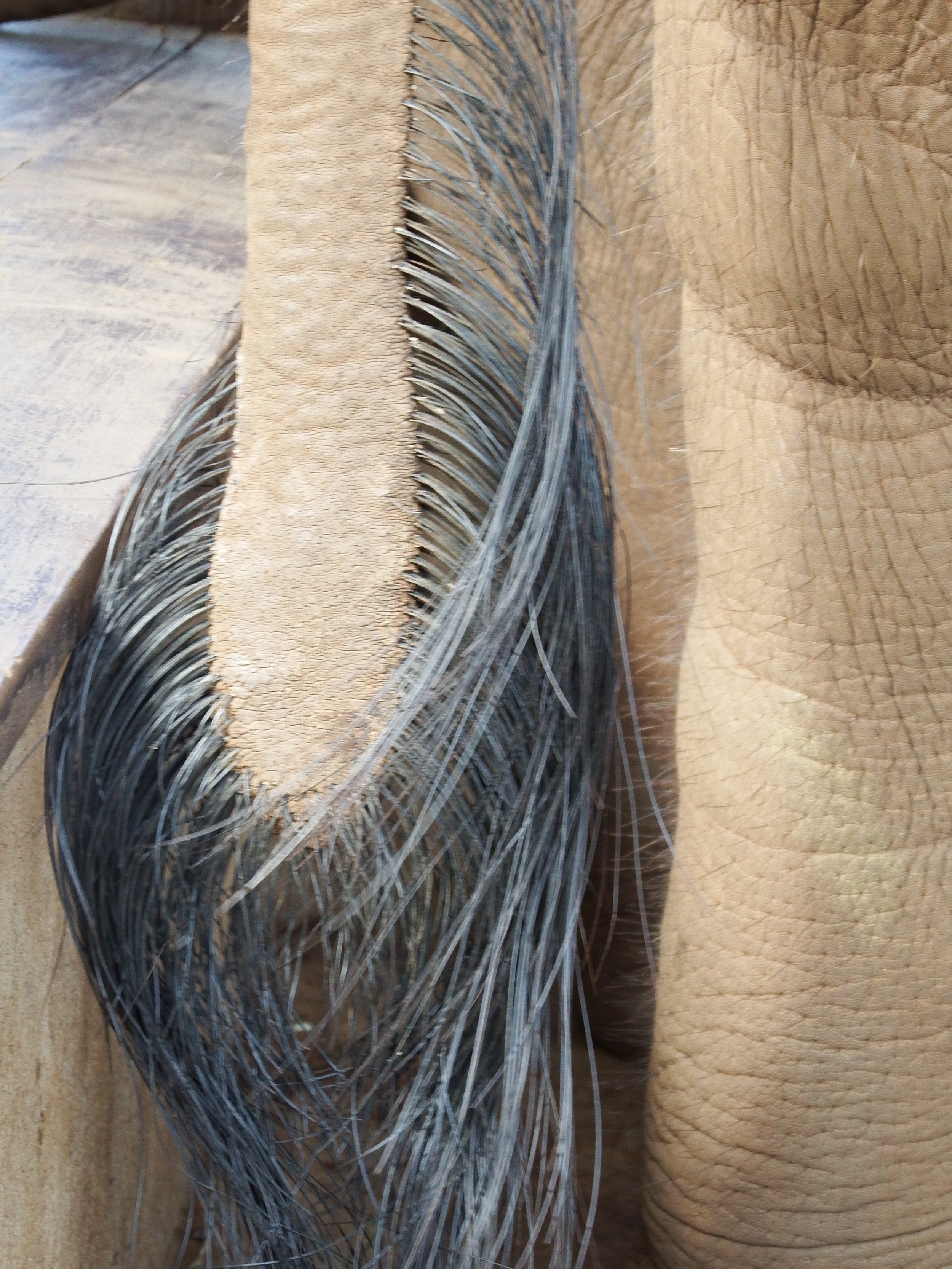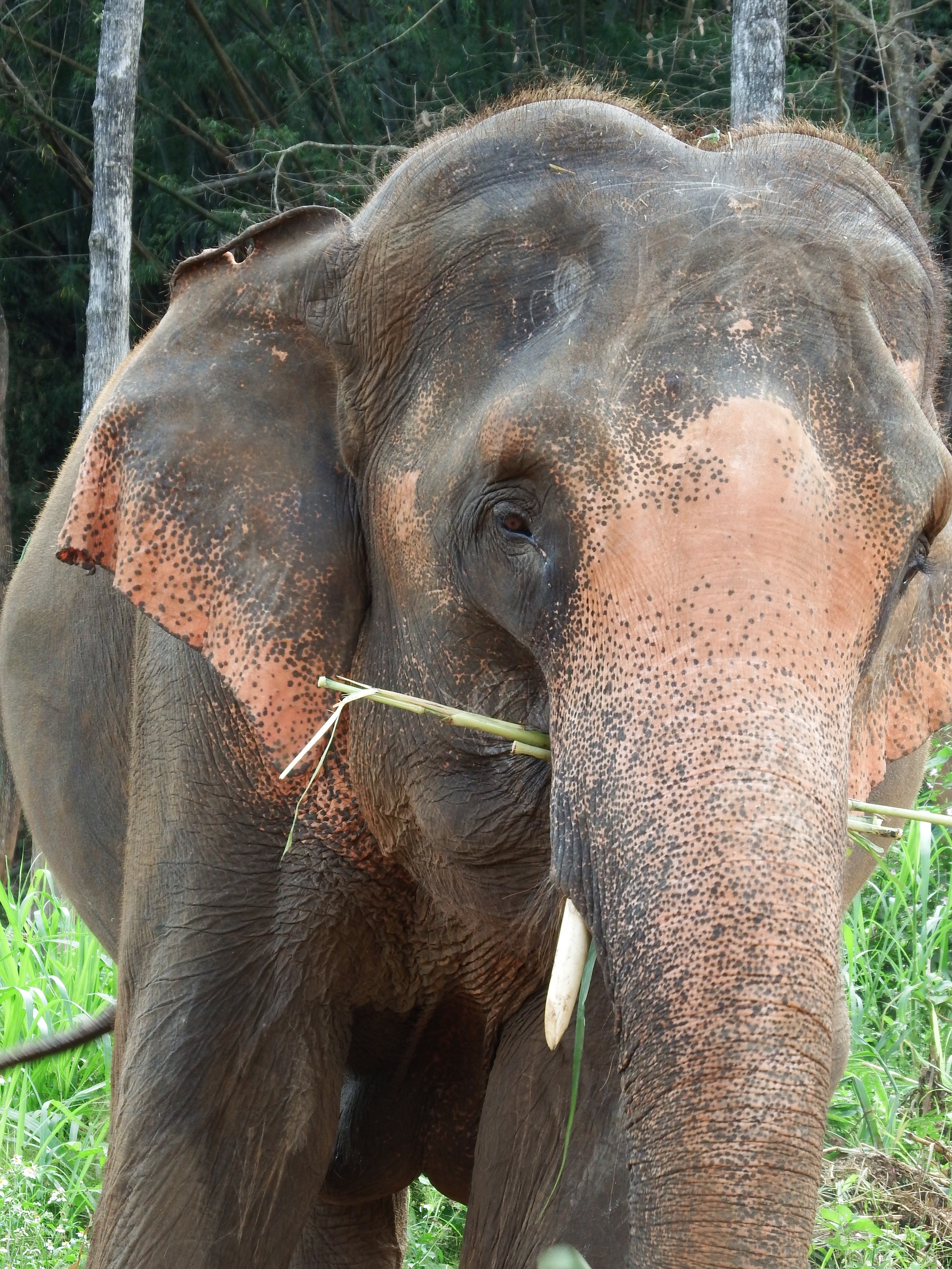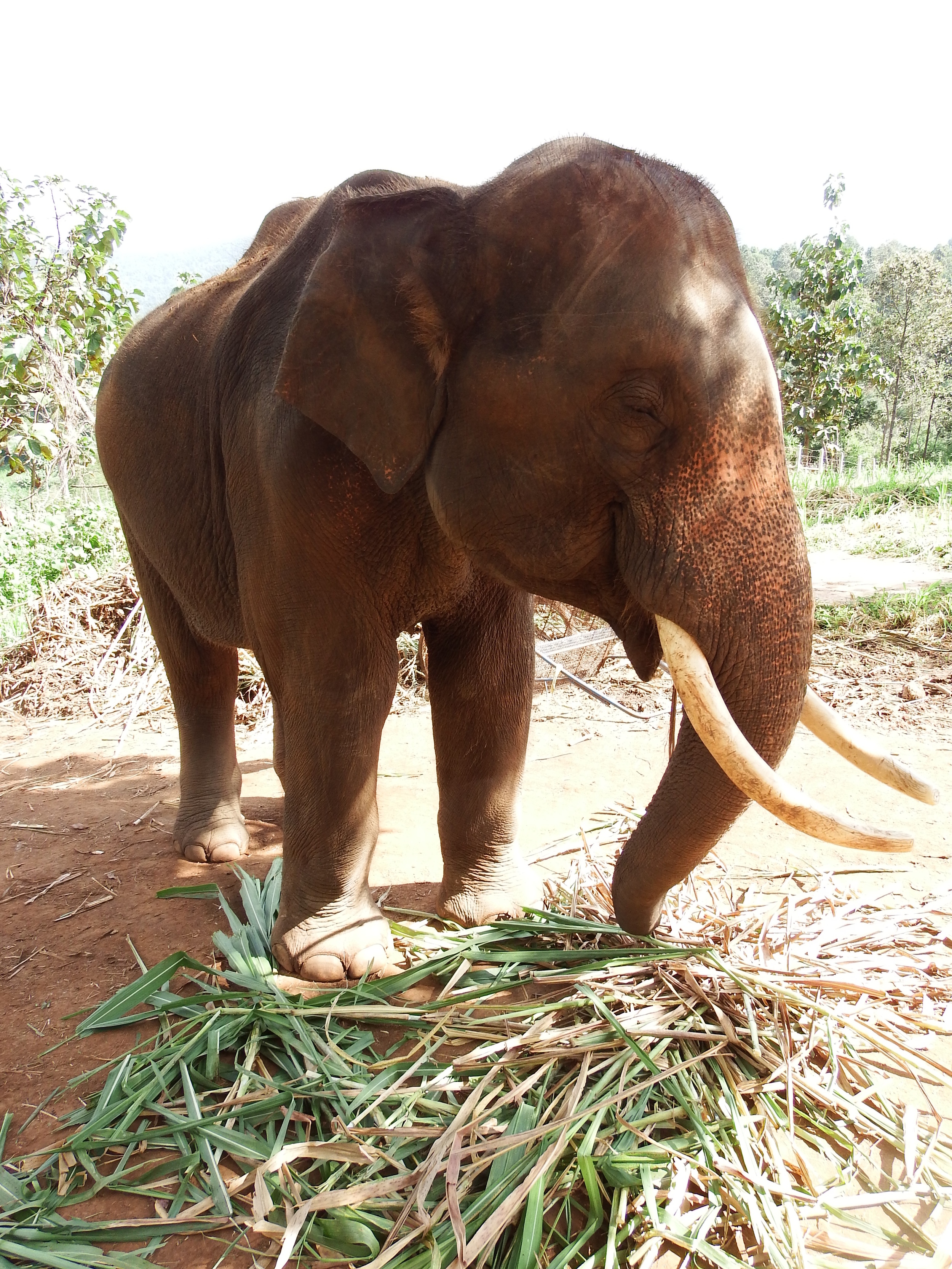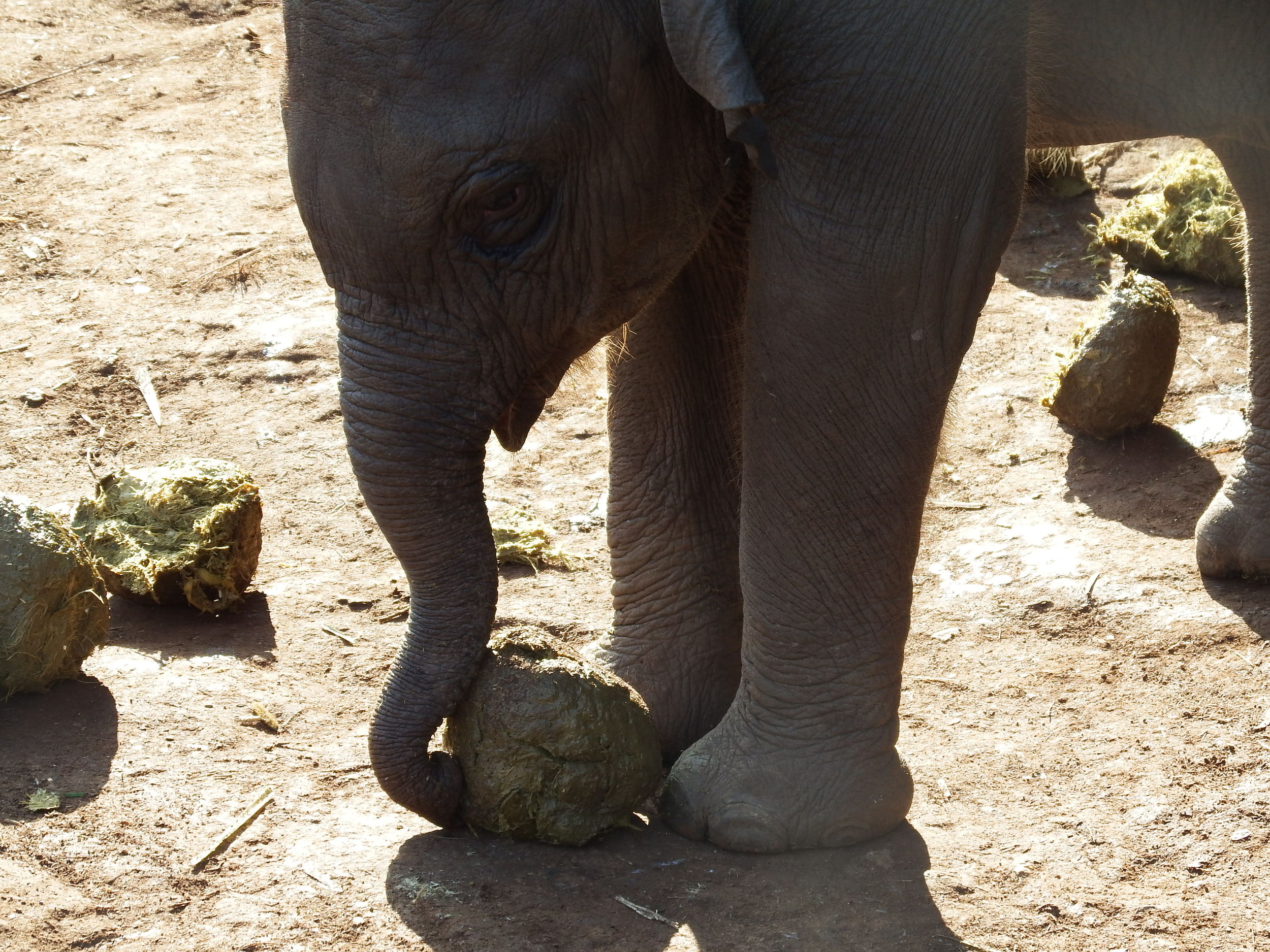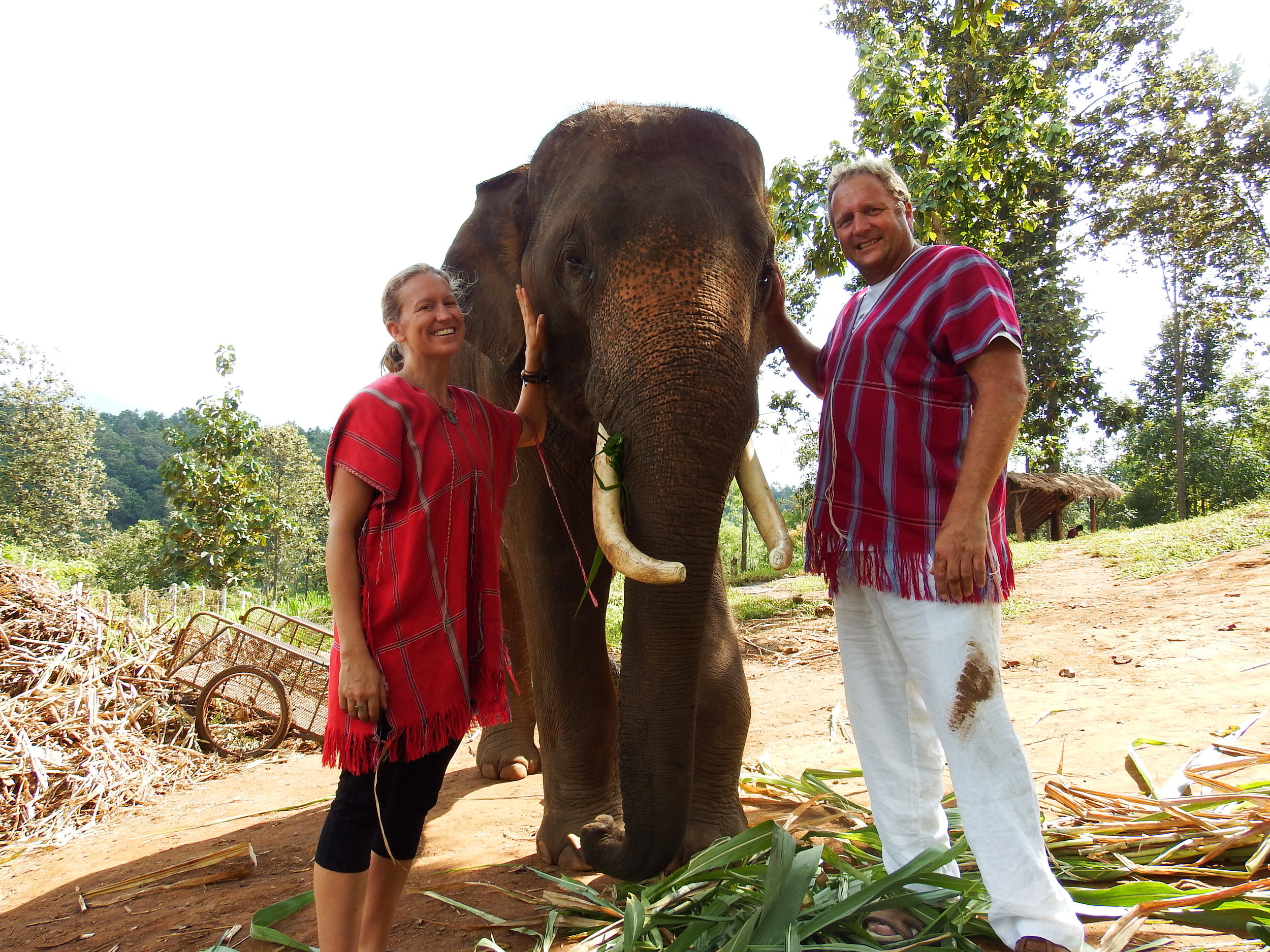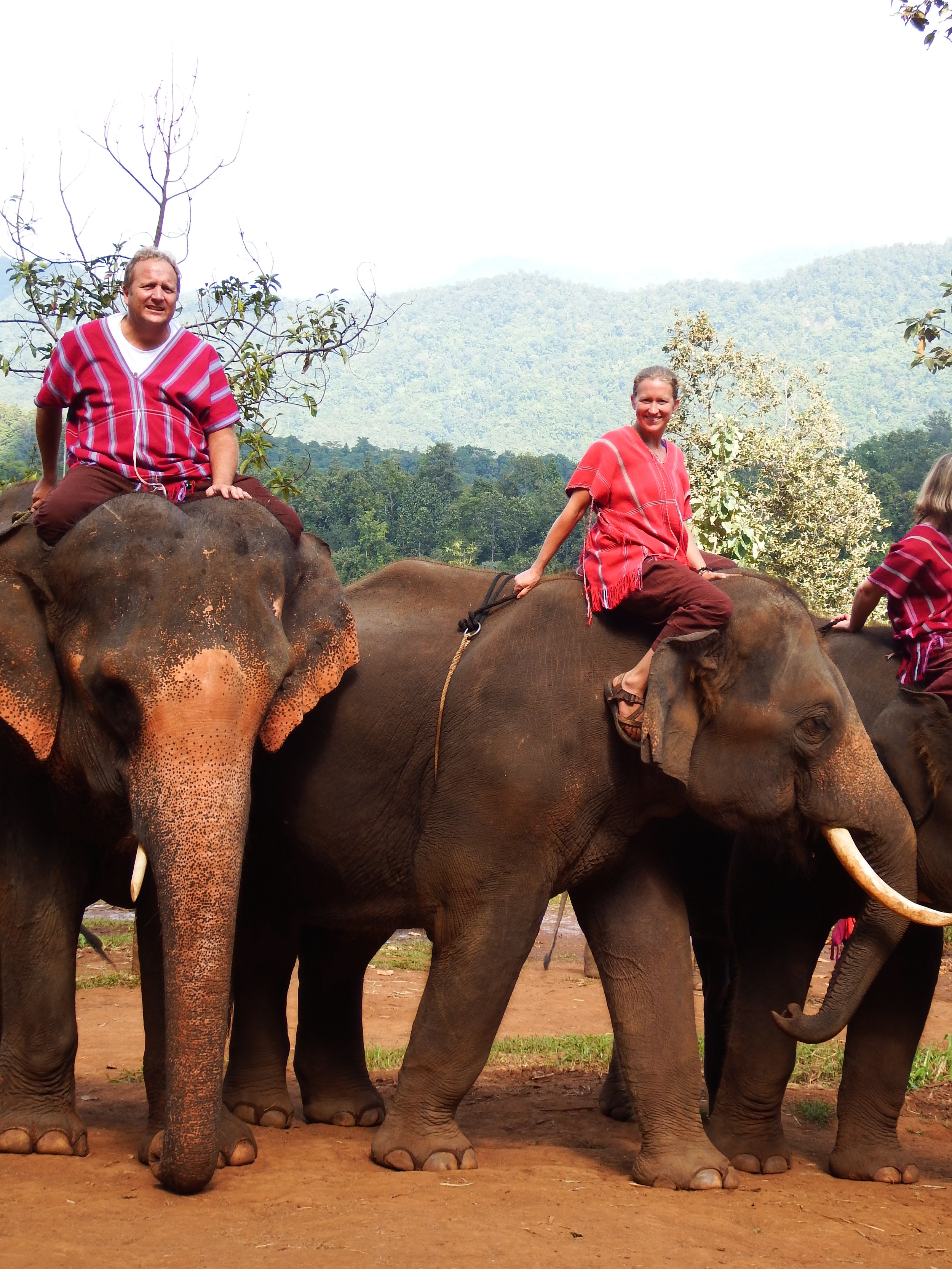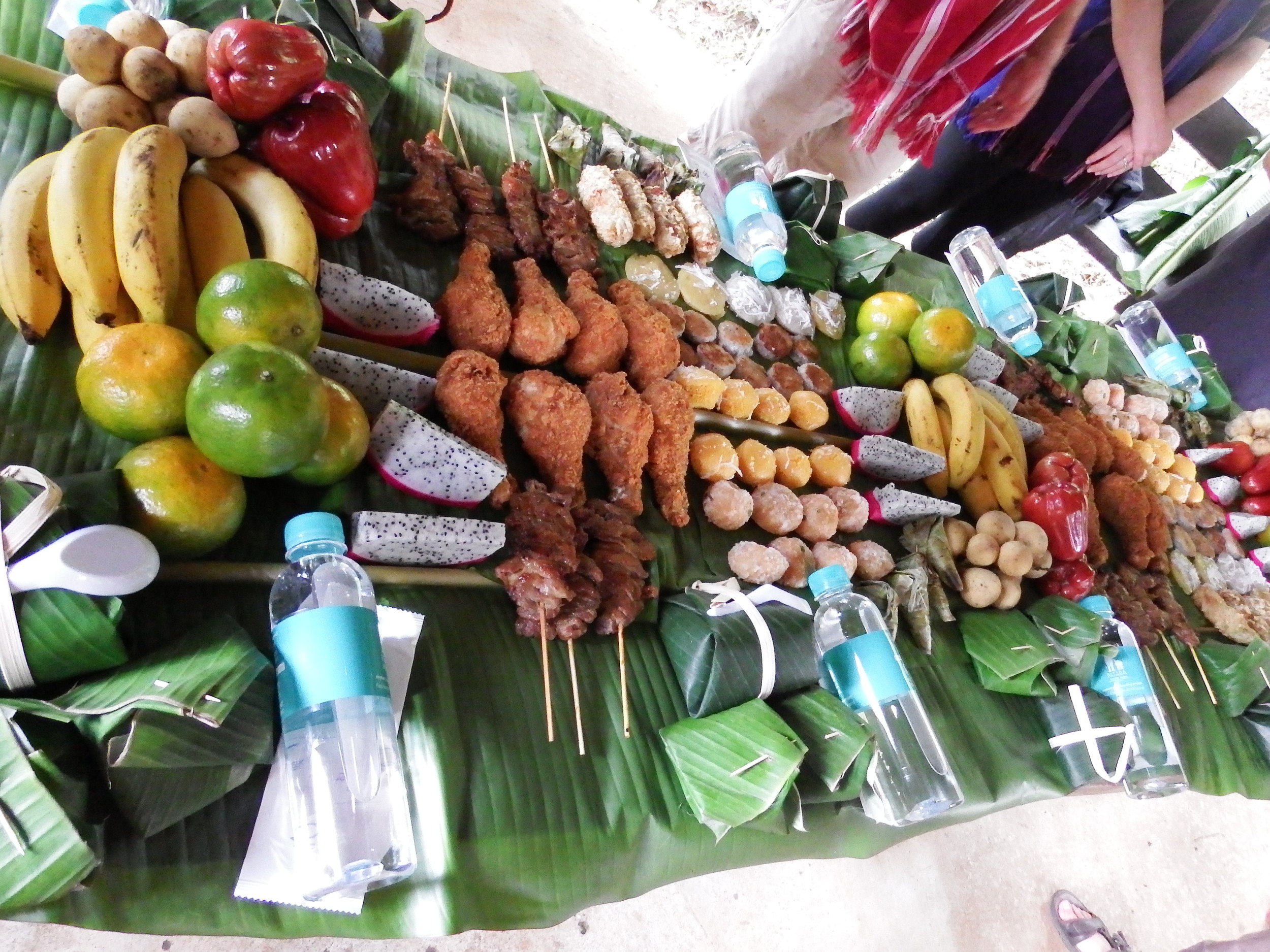medium from Hayley Joyell Smith on Vimeo.
"When you approach your elephant you must not show fear", instructs the elephant expert. Easy for him to say as a person who has a relationship with the massive animal. "Then you can say Ja Ja Ja!!", the mahout continues. At this, the elephant returns his hello with a trumpeted expression coming from her long trunk. “To praise the elephant say dee,dee and tap it on the trunk and below the eyes.” Next, to make friends with the elephant you must feed it. Tell the elephant that you have food by saying “baan, baan”. The elephant opens its mouth and the mahout places a 30cm long stalk of raw sugar under its trunk and lets the elephant take it. “Do not toss the food at an elephant, it does not like that. Now, you come and demonstrate.” The mahout points at my Uncle Max who stand, picks up the basket full of sugar cane and bananas and walks toward Ma Quan – his pregnant elephant for the day. See the video of their first meeting.
The morning was shaping up well but it wasn’t until the mahout started teaching us how to tell the age, health, and gender of an elephant by investigating the dung that I knew we had come to the right place. Chiang Mia is historically known for its elephants and thus its recent tourist elephant riding experiences. However, a large portion of the places practice methods that are not good for the creatures. For example, using chains, not allowing the elephants enough space and freedom to develop their own social structure, placing the wooden seats on the back, or using a bull-hook. I did not want to end up in a situation where my money supported anything that was bad for the elephants and thanks to a good deal of online research we decided on Patara Elephant Farm. Good call.
Before we ever mounted our elephant for the day we performed a health check, (included dung inspection) and cleaning of the elephant. Did you know that the only place an elephant sweats is their toenails? And you can tell how they slept by looking at the skin? They alternate sleeping on each side during the night and only sleep about 6 hours. The rest of the time they are concerned with eating - a lot of foliage and fruit. The bathing is important for maintaining hygiene and preventing skin infections. Finally, after a fabulous lunch and putting on proper mahout clothing it was time to learn how to get onto the elephant.
There are three main ways but some elephants only like one or two so each person may or may not have a choice. I used the over the trunk and up onto the head method. The elephant is incredibly agile, especially considering its size. It was a thrilling moment to tuck my feet behind the ears and ease into the contour of Suu’s neck. One by one the heard of ~8 elephants received its human and then we were off through the jungle.
Now, if you have ever been horse back riding you know how there is always one that always wants to take its own path and stop to eat every 5 paces. Well, that was Suu. This 6 year old bull had an agenda of his own and I was not compelled to press him to behave differently. Besides, it was a beautiful jungle and I was happy to take my time. The proper mahout that accompanied us was not so patient. Or maybe he wanted to to take charge but in the end he used a small switch made of living bamboo and a lot of vocal commands that moved Suu along. Toward the end of the path though Suu began to flap his ears (that means he is happy) and pick up the pace. For at the end was the waterfall and that meant a bath. Elephants love bath time and they played and rolled around gleefully - especially the young ones.
We joined the elephants in the water and with a scrub brush and bucket cleaned them. It was a most amazing sensation to be in the water with these animals. After the bathing and the waterfall it was time to say good-bye. In the end it was a most exciting day and I truly felt connected to Suu.


